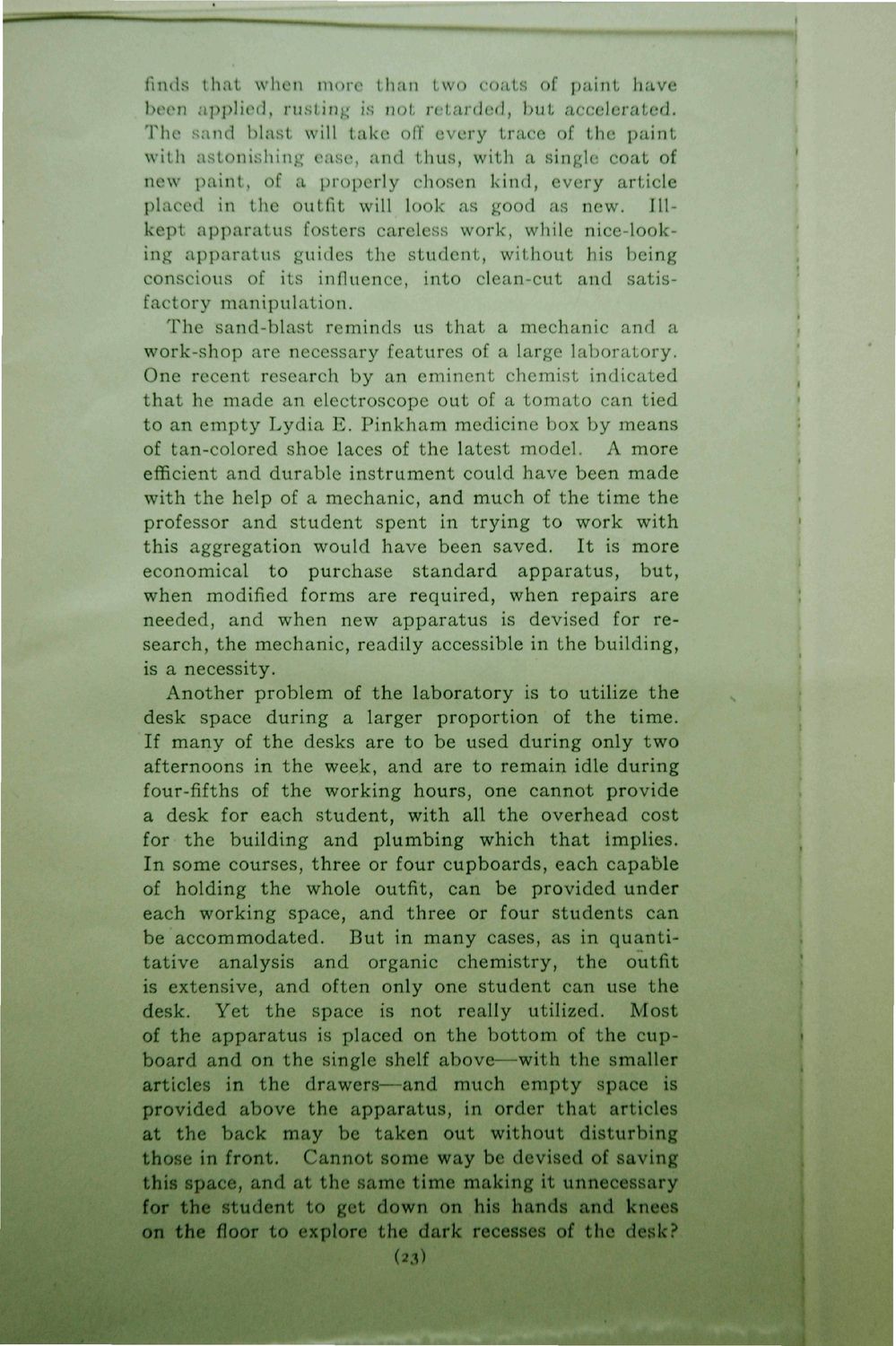| |
| |
Caption: Dedication - New Chemistry Building
This is a reduced-resolution page image for fast online browsing.

EXTRACTED TEXT FROM PAGE:
finds that when more than two coats of paint have been applied, rusting is not retarded, but accelerated. The sand blast will take off every trace of the paint with astonishing ease, and thus, with a single coat of new paint, of a properly chosen kind, every article placed in the outfit will look as good as new. Illkept apparatus fosters careless work, while nice-looking apparatus guides the student, without his being conscious of its influence, into clean-cut and satisfactory manipulation. The sand-blast reminds us that a mechanic and a work-shop are necessary features of a large laboratory. One recent research by an eminent chemist indicated that he made an electroscope out of a tomato can tied to an empty Lydia E. Pinkham medicine box by means of tan-colored shoe laces of the latest model. A more efficient and durable instrument could have been made with the help of a mechanic, and much of the time the professor and student spent in trying to work with this aggregation would have been saved. It is more economical to purchase standard apparatus, but, when modified forms are required, when repairs are needed, and when new apparatus is devised for research, the mechanic, readily accessible in the building, is a necessity. Another problem of the laboratory is to utilize the desk space during a larger proportion of the time. If many of the desks are to be used during only two afternoons in the week, and are to remain idle during four-fifths of the working hours, one cannot provide a desk for each student, with all the overhead cost for the building and plumbing which that implies. In some courses, three or four cupboards, each capable of holding the whole outfit, can be provided under each working space, and three or four students can be accommodated. But in many cases, as in quantitative analysis and organic chemistry, the outfit is extensive, and often only one student can use the desk. Yet the space is not really utilized. Most of the apparatus is placed on the bottom of the cupboard and on the single shelf above—with the smaller articles in the drawers—and much empty space is provided above the apparatus, in order that articles at the back may be taken out without disturbing those in front. Cannot some way be devised of saving this space, and at the same time making it unnecessary for the student to get down on his hands and knees on the floor to explore the dark recesses of the desk? (23)
| |